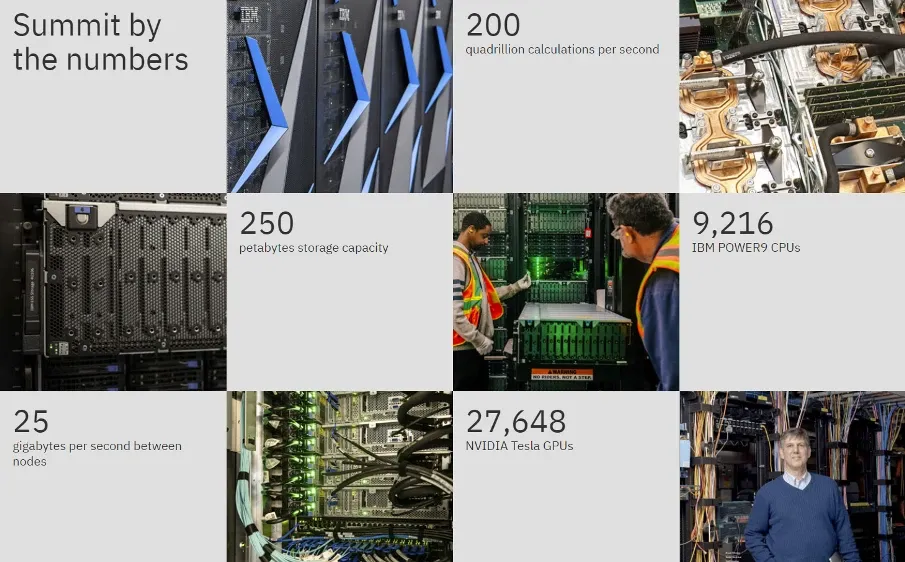Intel Builds the World’s Largest Neuromorphic System
Intel has built the world's largest neuromorphic system code-named Hala Point.

The U.S. has a new supercomputer and it’s twice as fast as the current record holder in China, according to Bloomberg.
IBM developed the Summit computer, with help from Nvidia, for the U.S. Department of Energy’s Oak Ridge National Laboratory. The system cost about $200 million to build, will occupy a warehouse the size of two tennis courts and be put to work on super-complex calculations that could lead to breakthroughs in fields from astrophysics to cancer research, the lab said in a statement.
Summit also brings the title of world’s fastest computer back to the U.S. It comes as the race between America and China for technological supremacy is being taken more seriously by U.S. lawmakers, who are concerned about the billions China is spending on artificial intelligence and quantum computing.
Summit operates at a speed of 200,000 trillion calculations per second or 200 petaflops. That’s more than twice as fast as the current record holder, the Sunway TaihuLight at the National Super Computer Center in Guangzhou, China, which runs at 93 petaflops. The third-fastest machine is also in China, operating at 33.8 petaflops.
IBM and Nvidia found ways to make the machine much faster, while only needing 30 percent more power than previous systems, Zacharia said. Still, Summit needs the same amount of power it takes to serve a small town. “There was a time when we thought a machine of this caliber would require a nuclear reactor right next to it to run it,“ he said.
The computer will use AI to try and solve problems that have stymied previous systems. Summit will speed up projects that require modeling massive events with trillions of possible outcomes, like the physics of supernova implosions, or how climate change is affecting weather patterns.
The machine will also work on simulating new materials for superconductors that will allow computers to run more efficiently and at lower temperatures, as well as looking at mitochondria in cells to develop early-warning tests for genetic diseases like Parkinson’s and Alzheimer’s.
The Department of Energy officially controls the system and who gets to use it. Scientific projects will be chosen from open submissions, and eventually private companies will be able to pay to have special access.